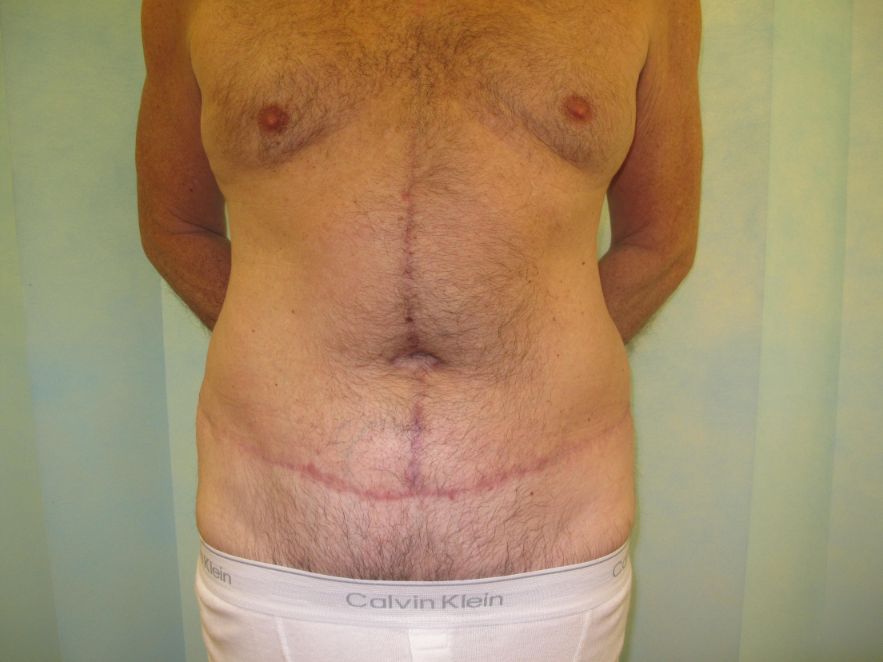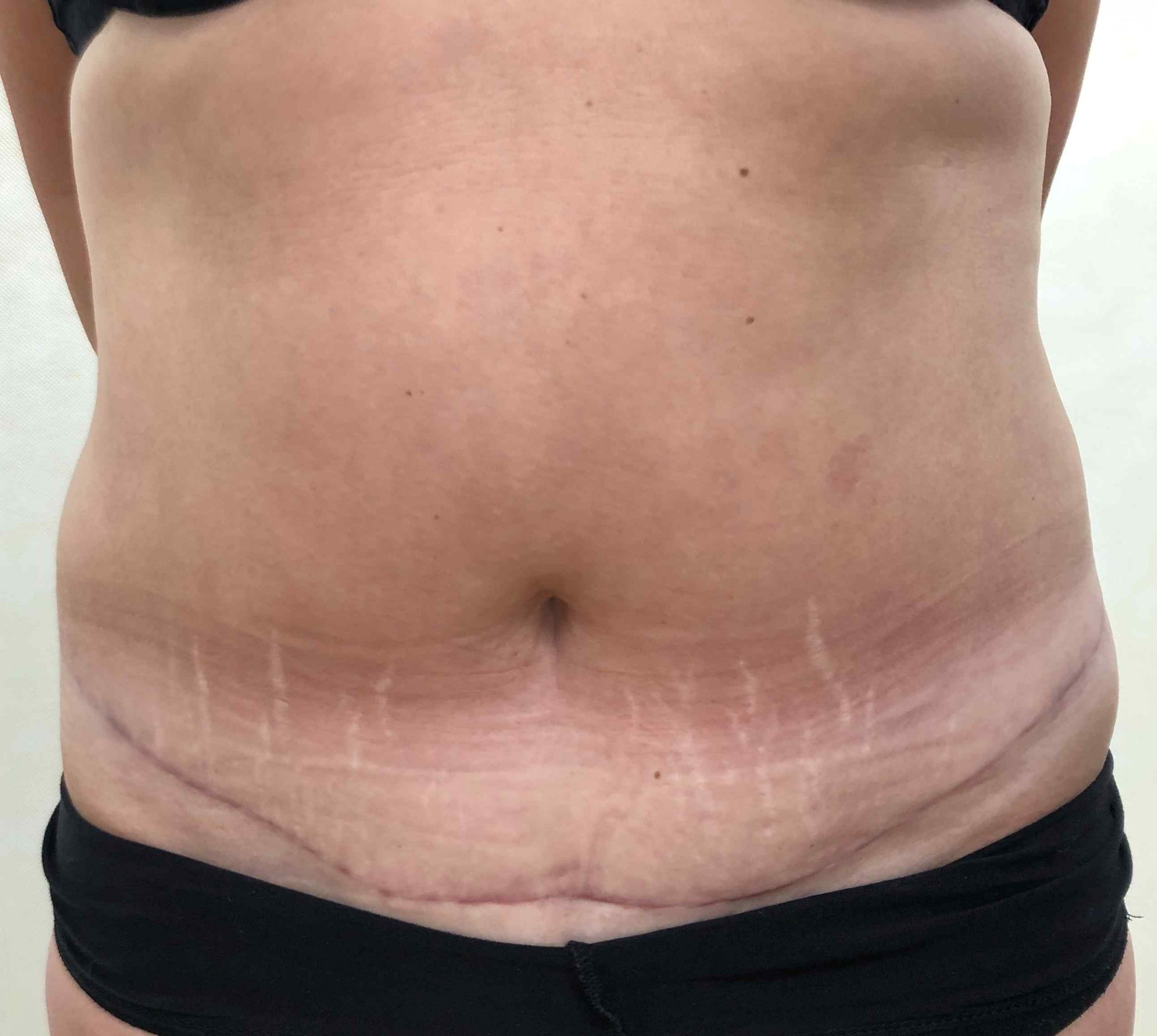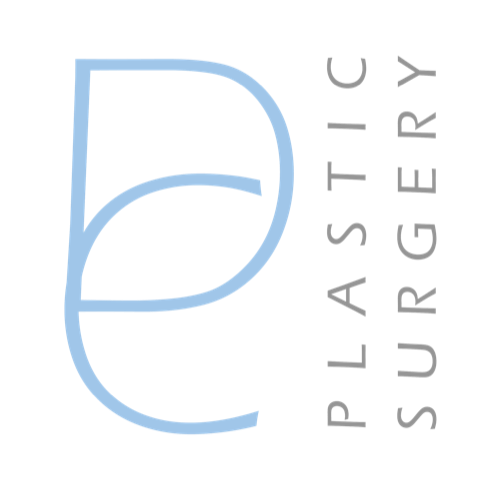Tummy tuck / Abdominoplasty
Tummy tuck, also known by its medical name abdominoplasty, is a popular and effective procedure regularly performed by Mr Chester.
Mr Chester has a particular interest in cosmetic surgery of the abdomen (tummy). The operation is designed to remove excess skin and to flatten the tummy by tightening the muscles in the midline. The procedure can be combined with liposuction, particularly to the sides of the tummy near the hips.
Why do patients seek abdominoplasty?
Patients frequently seek abdominoplasty due to excess skin following pregnancies or significant weight loss. Mr Chester also performs this surgery for patients who have developed separation of the midline muscles (divarication of the rectus muscles) and as part of surgery to deal with hernias.
Patients may complain of:
- Cosmetic embarrassment in and out of clothing
- Excess skin getting in the way during exercise
- Rashes under excess skin
- Discomfort and weakness in tummy muscles
- Occasionally, back pain as a result of muscle separation
What happens during the consultation?
How long will I be in hospital?
You will come into hospital on the day of surgery. For a standard abdominoplasty, the hospital stay is two nights after the operation. The hospital stay varies from 1-3 nights however depending on the degree of correction required.
What happens during the operation?
The procedure is performed under general anaesthetic (put to sleep) and takes between 2.5-3.5 hours depending on the extent of the surgery required. A standard abdominoplasty involves removing excess skin, repairing a gap between the muscles and re-siting the belly button once the tummy skin is pulled down. Drains are inserted which usually are removed before you are sent home. The scarring varies according to the type of tummy tuck but normally for a standard full abdominoplasty there is a long scar low down on the tummy running from hip to hip and one that runs around the belly button.
What follow-up appointments will I need?
Mr Chester’s normal practice is to see patients to check the wounds at around 1-2 weeks following the operation and then 2 weeks later. A scar check is performed at around 6 weeks and then a final review takes place around 6 months. Additional appointments will be provided if there are any issues with wound healing. Mr Chester provides the majority of the aftercare himself so that he can reassure patients at every step of their recovery.
What is the recovery period following surgery?
You should be able to walk short distances on the first day after surgery. During the first 2 weeks, you may not be able to stand up completely straight. It is advisable that you have someone to look after you for at least the first week after surgery. Most patients need 3-4 weeks off work. You should be able to drive after 3-4 weeks. Your level of activity will slowly build up in the first 6 weeks following which you should be able to commence light exercise. A pressure garment is worn for 6 weeks after the surgery. You will find that you will tire more easily in the first few months following the surgery.
How much does an abdominoplasty cost?
There are different types of abdominoplasty and therefore costs vary depending on the type of abdominoplasty required. Fixed price packages for a standard full abdominoplasty start from £6007. An exact quote will be provided following the consultation. A fixed price package includes hospital fee, surgical fee and anaesthetic fee.
Before and after photographs
Before and after photographs of patients who have had standard full abdominoplasty
Before surgery

After surgery







Other types of tummy tuck
It is important to note that there are different types of tummy tuck as one type does not suit all patients. Mr Chester will assess your needs and provide you with options. Below are examples of other tummy tucks that Mr Chester performs.
Fleur-de-lis abdominoplasty
This procedure is usually considered when patients have lost significant weight and on occasion for those who already have a long vertical scar already in the middle of their tummy. The operation is designed to reduce excess skin both vertically and horizontally and leads to a long vertical scar in addition to the scars of a standard abdominoplasty. Fleur-de-lis abdominoplasty allows removal of more skin and therefore achieves more tightening than standard abdominoplasty. Mr Chester will talk you through the options for your tummy to allow you to make the best choice for your needs. The recovery following this procedure is similar to that of a standard abdominoplasty. Patients normally stay in hospital for 3 nights.
Before surgery

After surgery



Before surgery

After surgery

Mini-abdominoplasty
Some patients have a relatively small amount of skin excess and/or muscle weakness below the belly button and would like to have a less extensive operation with a shorter recovery period. The mini-abdominoplasty is ideally-suited in this situation. Skin excess is removed but the belly button is not re-sited. Muscle repairs below the belly button can be performed.
Before surgery

After surgery

Modified bespoke abdominoplasty
The patient below liked their umbilicus and only wanted correction in the lower part of the abdomen. A type of mini-abdominoplasty was performed but supplemented with muscle repairs below the belly button. Liposuction was performed to the sides of the tummy near the hips.
Before surgery

After surgery

